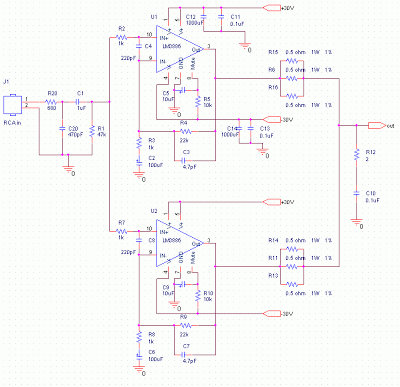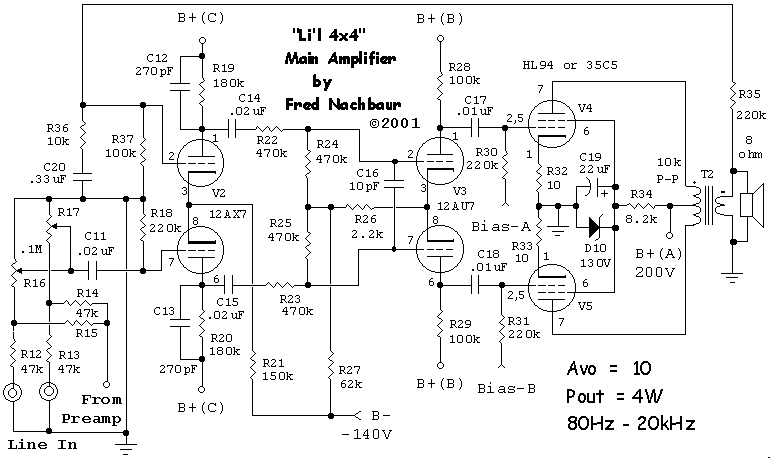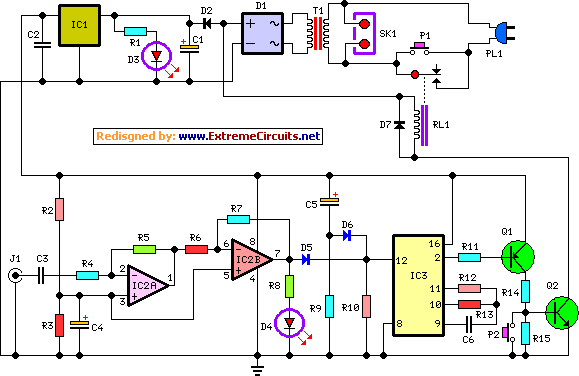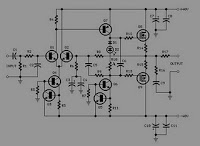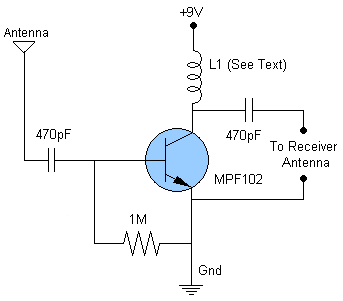
OCL yourself feedback amplifier analysis
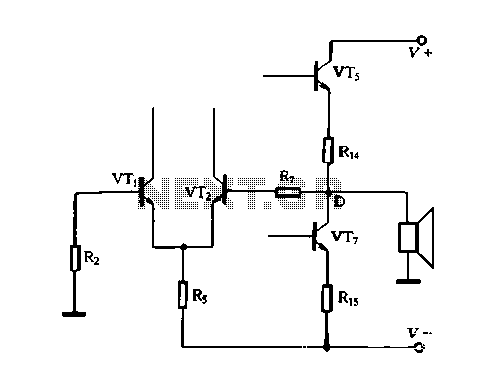
The DC feedback circuit is illustrated in Figure 1-31. In this circuit, resistor R7 is connected to the output terminal, which is the midpoint of the static differential input stage voltage Vr, between the base terminals. This configuration represents a complete negative feedback circuit functioning as a voltage follower. The output voltage, with a magnification factor of 10, tracks changes in the input voltage. As previously analyzed, the voltage at Vb1 and Vb2 is zero volts, resulting in a midpoint voltage VD of zero volts. If, for any reason, the voltage VD increases, the negative feedback mechanism will automatically adjust to bring VD back to zero volts.
In this DC feedback circuit, the key component is the resistor R7, which plays a crucial role in establishing the feedback loop. By connecting R7 to the output terminal, it allows the circuit to sense the output voltage and adjust the input accordingly. The differential input stage is designed to amplify the input signal while maintaining stability through negative feedback. The voltage follower configuration ensures that the output voltage closely follows the input voltage, providing a high input impedance and low output impedance.
The gain of the circuit is set to 10, which means that for every 1 volt change at the input, the output will change by 10 volts. This gain is achieved through the careful selection of the feedback components and the operational amplifier used in the circuit. The operational amplifier's properties, combined with the feedback from R7, ensure that the output remains stable and responsive to changes in the input.
The midpoint voltage VD is critical for the operation of the circuit. When VD is at zero volts, the circuit operates in its desired state. However, if external factors cause VD to increase, the feedback loop will detect this change. The operational amplifier will respond by adjusting the input, effectively reducing VD back to its nominal value of zero volts. This self-regulating feature is essential for maintaining the performance of the circuit under varying conditions.
Overall, this DC feedback circuit exemplifies the principles of negative feedback in electronic design, showcasing how simple components can work together to create a stable and effective voltage follower. The design ensures that the output remains consistent and reliable, providing a robust solution for applications requiring precise voltage tracking.DC feedback works shown in Figure l-31. In the circuit, R7 connected to the output terminal (the midpoint of static) D of the differential input stage Vr, between the base. Sta tic, this is a whole negative feedback circuit, which is a voltage follower, the voltage at a magnification of 10 output voltage follows the input voltage changes o As previously analyzed, Vbl VbZ ov, so the midpoint voltage VD OVo when some reason the VD increases, the negative feedback regulation, will automatically make the VD word back ovo
In this DC feedback circuit, the key component is the resistor R7, which plays a crucial role in establishing the feedback loop. By connecting R7 to the output terminal, it allows the circuit to sense the output voltage and adjust the input accordingly. The differential input stage is designed to amplify the input signal while maintaining stability through negative feedback. The voltage follower configuration ensures that the output voltage closely follows the input voltage, providing a high input impedance and low output impedance.
The gain of the circuit is set to 10, which means that for every 1 volt change at the input, the output will change by 10 volts. This gain is achieved through the careful selection of the feedback components and the operational amplifier used in the circuit. The operational amplifier's properties, combined with the feedback from R7, ensure that the output remains stable and responsive to changes in the input.
The midpoint voltage VD is critical for the operation of the circuit. When VD is at zero volts, the circuit operates in its desired state. However, if external factors cause VD to increase, the feedback loop will detect this change. The operational amplifier will respond by adjusting the input, effectively reducing VD back to its nominal value of zero volts. This self-regulating feature is essential for maintaining the performance of the circuit under varying conditions.
Overall, this DC feedback circuit exemplifies the principles of negative feedback in electronic design, showcasing how simple components can work together to create a stable and effective voltage follower. The design ensures that the output remains consistent and reliable, providing a robust solution for applications requiring precise voltage tracking.DC feedback works shown in Figure l-31. In the circuit, R7 connected to the output terminal (the midpoint of static) D of the differential input stage Vr, between the base. Sta tic, this is a whole negative feedback circuit, which is a voltage follower, the voltage at a magnification of 10 output voltage follows the input voltage changes o As previously analyzed, Vbl VbZ ov, so the midpoint voltage VD OVo when some reason the VD increases, the negative feedback regulation, will automatically make the VD word back ovo
Warning: include(partials/cookie-banner.php): Failed to open stream: Permission denied in /var/www/html/nextgr/view-circuit.php on line 713
Warning: include(): Failed opening 'partials/cookie-banner.php' for inclusion (include_path='.:/usr/share/php') in /var/www/html/nextgr/view-circuit.php on line 713

